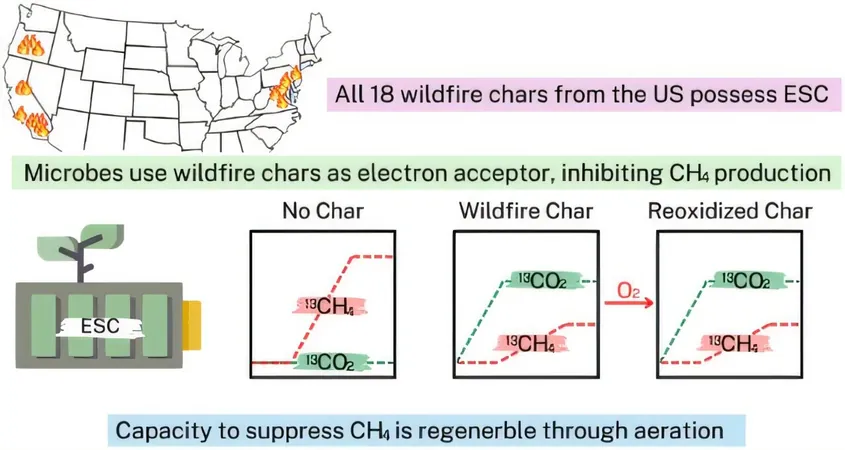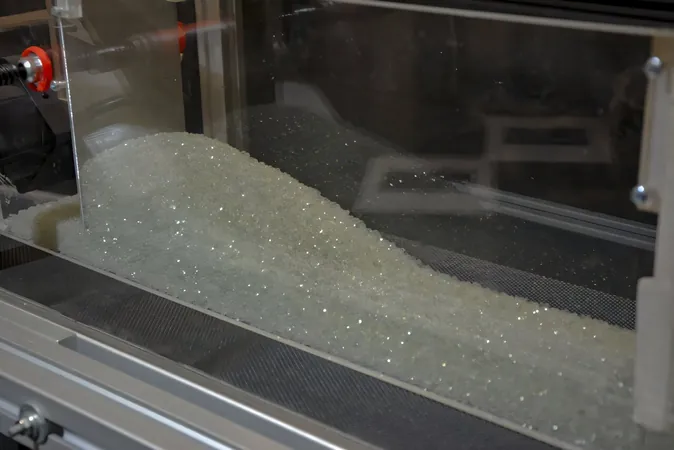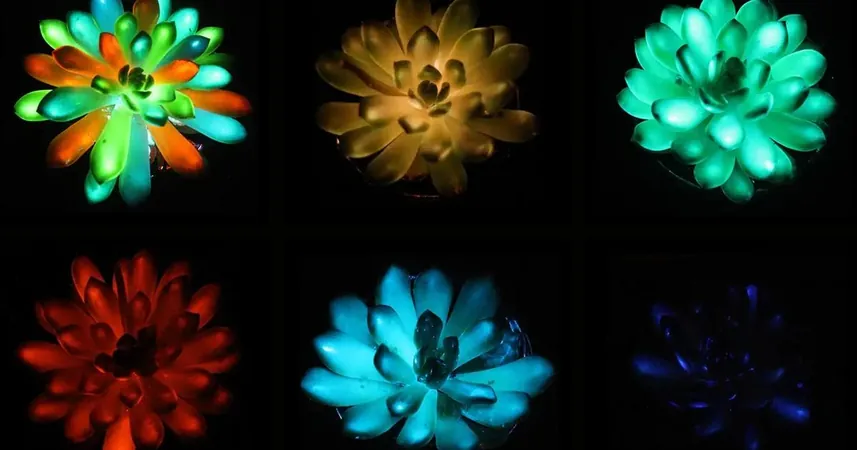
Wildfires May Hold the Key to Slashing Methane Emissions—Here's How!
2025-08-19
Author: Emily
From Destruction to Discovery: The Surprising Benefits of Wildfire Char
In the aftermath of devastating wildfires that have ravaged areas like Colorado, Canada, and the Grand Canyon, one University of Delaware professor has unveiled a remarkable potential hidden within the charred remains. While wildfires are known for their destruction, there’s a glimmer of hope in the ash and debris they leave behind.
Pei Chiu, a civil and environmental engineering professor, is studying ‘wildfire char’—the carbon-rich remnants left post-fire. His research uncovers how this wildfire char could be instrumental in reducing methane emissions, a greenhouse gas significantly more potent than carbon dioxide.
Understanding Char: Nature's Carbon Treasure
So, what exactly is char? Formed under intense heat, char comes from wildfires, while biochar is the man-made equivalent produced through a process called pyrolysis, which heats plant materials like wood chips and agricultural leftovers in a low-oxygen setting. This organic material not only enriches soil but may also serve critical environmental functions.
The Role of Char in Combating Methane
Chiu and his team have recently discovered that heating plant materials creates biochar capable of reversing electron exchanges, a process essential for energy production. This is crucial as, in low-oxygen environments, methane-producing microbes thrive—releasing massive amounts of methane primarily from sources like landfills and agricultural waste.
Wildfires and Microbial Metabolism: A Natural Connection
The link between wildfire char and methane could be revolutionary. With evolutionary pressure, microorganisms have adapted to metabolize char, which might allow beneficial bacteria to flourish while suppressing methane-producing competitors. This could reshape how we approach carbon management and environmental health.
Recent Findings: Char's Incredible Potential to Store Electrons
Recent research published by Chiu's group indicates that both wildfire chars and biochars have a massive electron storage capacity. A mere gram of char can hold billions of trillions of electrons. Given that U.S. agriculture generates an astounding 140 million tons of crop residues annually, this reveals an incredible reservoir of potential for mitigating greenhouse gases.
Why Does This Matter for Our Planet?
The implications are staggering. By promoting bacteria that ‘breathe’ char, wildfire chars can stifle methane production—a gas responsible for over 30% of current global warming effects. Sustainable utilization of these microbes offers an endless cycle of environmental benefits, including removing pollutants from water supplies and protecting crops.
Passion for Science: The Inspiration Behind the Research
Chiu's passion shines through his work, revealing vast reserves of electron-rich char that have been unknowingly a part of our ecosystem for eons. As we uncover how microbes interact with char, we edge closer to innovative solutions that could combat climate change and rebuild our planet's health.
In a world grappling with climate disasters, this might just be the bright spark we need.









 Brasil (PT)
Brasil (PT)
 Canada (EN)
Canada (EN)
 Chile (ES)
Chile (ES)
 Česko (CS)
Česko (CS)
 대한민국 (KO)
대한민국 (KO)
 España (ES)
España (ES)
 France (FR)
France (FR)
 Hong Kong (EN)
Hong Kong (EN)
 Italia (IT)
Italia (IT)
 日本 (JA)
日本 (JA)
 Magyarország (HU)
Magyarország (HU)
 Norge (NO)
Norge (NO)
 Polska (PL)
Polska (PL)
 Schweiz (DE)
Schweiz (DE)
 Singapore (EN)
Singapore (EN)
 Sverige (SV)
Sverige (SV)
 Suomi (FI)
Suomi (FI)
 Türkiye (TR)
Türkiye (TR)
 الإمارات العربية المتحدة (AR)
الإمارات العربية المتحدة (AR)